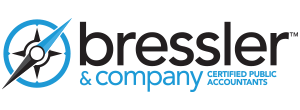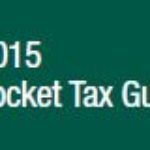No Health Insurance – Apply for An Exemption Waiver NOW
If you didn’t have health insurance coverage this year, you may be subject to a penalty unless you qualify for one of the many general or hardship exemptions. There are in excess of 30 possible exemptions from the penalty, and some of the exemptions require you to complete and file an application for approval. If approved for an exemption that requires advance approval, you will be issued an exemption certificate number (ECN) that must be included on your tax return to claim the exemption. If you don’t qualify for one of the pre-defined exemptions that can be applied for on your tax return, you will need to apply for an ECN before you can file your tax return, and that could delay your tax return processing and submission for a number of weeks. The longer you wait to apply, the longer the expected delay in received your approval.
Not all exemptions require approval, so make sure your reason for an exemption requires advance approval before going to the trouble of completing and submitting the form. If you qualify for an exemption that doesn’t require prior approval, you can claim it on a new IRS form (Form 8965) that will need to be included with your 2014 tax return.
Certain exemptions can only be requested at the time the federal return is filed, while others MUST be requested through the Marketplace before filing your federal return.
Exemptions that can only be obtained from the Marketplace are as follows (must be filed for in advance and return cannot be filed until received):
- Member of a religious sect that is recognized by the Social Security Administration as conscientiously opposed to accepting insurance benefits
- Individual did not have access to affordable coverage based on their projected household income
- Individual is ineligible for Medicaid solely because the state they reside in did not expand the eligibility requirements for Medicaid under the Affordable Care Act
- Individual has been notified that their health insurance policy is not being renewed and the individual considers other available plans as being unaffordable
- Individual is experiencing circumstances that prevent them from obtaining coverage under a qualified health plan
Exemptions that can be requested through the Marketplace or on Form 8965 when filing a 2014 federal return (predefined exemptions):
- Individual is a member of a recognized health sharing ministry
- Members of a federally recognized Native American tribe
- Individual is incarcerated
- Coverage is unaffordable
- Individual purchased health insurance through the Marketplace during the initial enrollment period but has a coverage gap at the beginning of 2014
- Individual is a Native American, Alaska native, or a spouse or descendant who is eligible for services through a Native American health care provider
If you need to apply to the Marketplace in advance, the approval form instructions cover several types of exemptions, will take some time to complete; and, once the application is submitted, the approval/denial process presently takes more than two weeks. Once others realize they need approval for certain hardship exemptions, however, you can expect the approval process to take considerably longer. While application forms are available online, each application must be printed, filled out manually, and then snail-mailed to the government for processing. With tax season just around the corner, you don’t want your refund held up while you are applying for an exemption; so, start the process early.
If you didn’t have insurance for some period of time during the year (the penalty is computed by the month) and you don’t qualify for one or more of the exemptions, then you will be subject to the penalty for not being insured (the official name for the penalty is the “shared responsibility payment”).
The penalty is generally the larger of a flat dollar amount per individual or a percentage of your income, whichever is greater. For 2014, the full-year penalty, based upon the flat dollar amount, is $95 per adult and $47.50 per child, capped at $285 regardless of family size. The full-year penalty determined by income is 1% of the amount that your household income exceeds your tax filing income threshold.
Example: For 2014, Kevin and Beverly are married filing jointly with two minor children. Their household income is $55,000 and their filing threshold is $20,300 (their standard deduction of $12,400 plus the exemption amount of $3,950 each for both of them). So, their flat dollar amount for a full year would be $285, and their percentage of income amount would be $347.00 (($55,000 – $20,300) x 1%). Thus their penalty would be $347.00 for a full year without insurance or $28.92 per month for the family.
For the first year of the shared responsibility payment, 2014, the penalties are low. In 2015, the flat dollar amounts jump to $325 per adult and $162.50 per child (capped at $975), while the percentage of income jumps to 2%. Then, in 2016, the per-adult flat dollar amount goes to $695 and the child amount to $347.50 (maximum $2,085), while the percentage of income increases to 2.5%. If our prior example had taken place in 2016, Kevin’s and Brett’s penalty would be $2,085 (2 x $695 plus 2 x $347.50) since the flat dollar amount is larger than their percentage of income amount.
Kevin and Beverly, based upon their income, would qualify for some amount of premium assistance credit that will help them pay the cost of their health insurance if they purchase coverage through a government marketplace. With the severe increase in penalties over the next two years, they will need to consider whether the cost of health insurance (and the benefits that come with coverage) is a better option than paying the penalty. Open enrollment for 2015 marketplace insurance begins November 15, 2014.
If you have questions about the shared responsibility payment or penalty exemptions you may qualify for, please give Bressler & Company a call at 559.924.1225.





